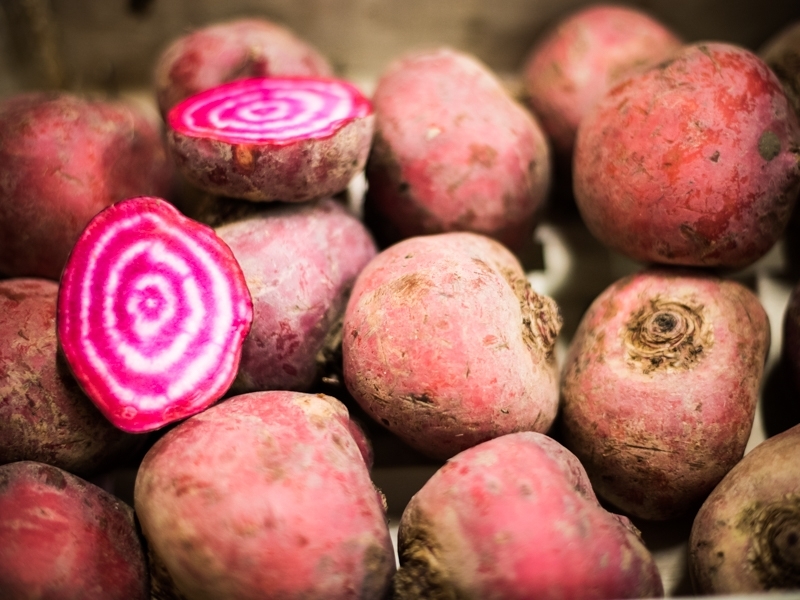Beetroot
Beta vulgaris L.
Amaranthaceae
Beetroot comes from the maritime chard, a wild beet that grows from the shoreline of the Mediterranean coast all the way to the North Sea. The Romans named it beta, because the shape of the stem tilts under the weight of its seeds and evokes the Greek letter β.
From this species two lineages were selected: one for its leaf, chard or chard; the other for its root, beetroot. He will conduct researches to extract the sugar but will fail to discover a truly profitable extraction process.
A special feature of beetroot is its sweet taste. In 1575, Olivier de Serres, a French agronomist, describes beets in his book Le Théâtre d’Agriculture et Mesnage des ChampsHe mentions this characteristic: “the juice that it makes while cooking, similar to sugar syrup, is very beautiful to see for its vermilion color.»
In 1747, the Prussian chemist Andreas Sigismund Marggraf managed to crystallize sugar beet sugar and to show that its sugar crystals are the same as those of sugar cane: sucrose.
With the continental blockade introduced in France in 1806, the replacement of colonial products such as cane sugar, imported from the West Indies, became indispensable.It is to respond to this shortage that Napoleon promoted the cultivation of sugar beet on the national territory by ordering by decree the cultivation of 100 000 hectares of beets to cover the France’s need for sugar.
Many sugar factories will close their doors when the blockade is lifted, but the sugar beet industry will return in the second half of the 19th century with the abolition of slavery (1848), which causes the price of cane sugar to rise sharply.
In the middle of the 19th century, the consumption of this beet as a vegetable became popular throughout Europe, especially in Eastern Europe where it enters many specialties such as the Polish Buraczki z chrzanem or the Ukrainian bortch It was at this time that a selection of varieties with red, white, yellow or even two-colored roots, of superior taste quality, such as Chioggia beetroot from Italy, was developed.
Regarding nutrients, beetroot provides vitamins of group B, in particular vitamin B9 (folic acid or folates), vitamin A, beta-carotene and vitamin C.Its flesh also contains a wide range of minerals: iron, sodium, magnesium, potassium, calcium, zinc, copper and phosphorus.
Homemade lipstick with shea butter and beetroot
Beetroot strongly colors, so let’s take this recipe for homemade lipstick !
Ingredients
- 1 teaspoon of beeswax
- 1 teaspoon of shea butter
- 1 teaspoon of olive oil or almond oil
- 1 teaspoon beetroot dried and reduced to powder for color.
- A small pot
Preparation
- Place the beeswax, shea butter and oil in a saucepan and melt in a bain-marie.
- When the mixture is homogeneous, add the beetroot powder and mix again.
- When ready, pour the mixture into the container.
- Allow the lipstick to sit for 12 hours.
